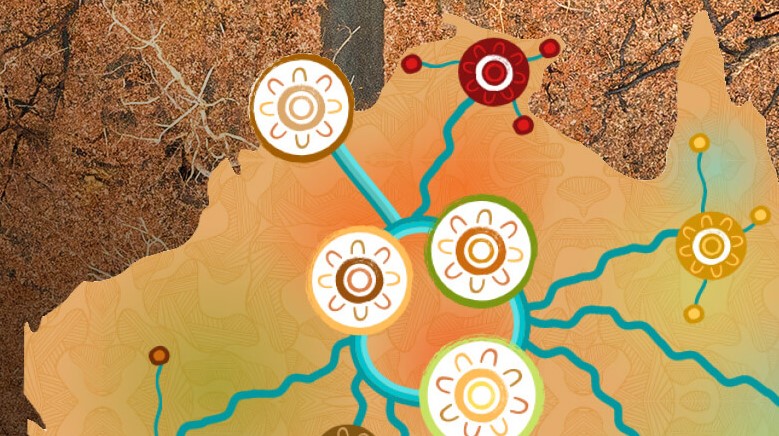HEAL national research network addressing the health effects of environmental change

The recent floods in New South Wales and Queensland, the Japanese Encephalitis outbreak across eastern and southern Australia and the bushfires in Western Australia have emphasised the urgent need to address the devastating consequences of environmental and climate change. Coinciding with a surge in COVID-19 cases in these jurisdictions, these events have exposed the vulnerability of the Australian health system, and of our communities at large, to converging public health, environmental and climate crises.
Australian communities in flood and fire prone areas are particularly vulnerable to extreme events, and population centres are susceptible to air pollution and overheating. Internationally, there is increasing recognition that climate change and environmental degradation are a major health crisis. The World Health Organization estimates that more than 13 million deaths around the world every year are due to avoidable environmental causes. Accordingly, World Health Day 2022 has the theme “our planet, our health”, which focuses attention not only on the detrimental effects of climate change and environmental pollution, but also on the multiple health benefits that clean energy and sustainable development can bring to our communities.
To address the unfolding climate, environmental and health crises – and opportunities – we need evidence-based interventions that will strengthen the resilience and responsiveness of the Australian health system to environmental change, protect and improve the health of communities, and reduce inequities within and across communities and generations. We also need evidence on the effectiveness of targeted interventions aiming to reduce the carbon footprint of the Australian health sector, which represents 7 per cent of the national carbon emissions, and consequently its impact on our environment and our health.
This is the broader focus of HEAL – the Healthy Environments and Lives National Research Network – a coalition of 100 investigators and more than 30 organisations from across Australia that will bridge the gap between knowledge and action. It brings together Aboriginal and Torres Strait Islander wisdom, public health, epidemiology, sustainable development, and innovative data science and communication methods to address environmental change and its impacts on health across all Australian states and territories. The Network has grown organically from the ashes of the devastating Black Summer 2019-20 bushfires and through strong engagement with government agencies, non-government organisations, charities and communities to provide timely health protection advice based on robust evidence.
However, prevention is better than cure.
HEAL will develop the scientific evidence, and research capacity and capability, to mitigate the long-term health consequences of environmental and climate change, and improve the health and wellbeing of communities. Particular focus will be given to at-risk groups in regions and communities disproportionately affected by environmental and climate change. This evidence is based on a holistic assessment of costs and benefits, and distributional effects of policies to support long-term solutions, rather than temporary fixes to individual environmental crises such as extreme floods and bushfires.
To meet this need, we are consulting extensively with the Australian community, government health and environmental authorities, health sector organisations, Indigenous organisations, and data providers to integrate a complex social, environmental, economic and institutional ecosystem into a cohesive, interdisciplinary research network. Respectful integration of Aboriginal and Torres Strait Islander and Western concepts of health and related knowledge systems is essential to this effort, recognising that Aboriginal and Torres Strait Islander concepts of health holistically encompass connection to culture, family, language, community, and Country.
As the Director of the HEAL Network, I am indebted to an exceptional leadership team from across Australia, and to the Australian National University and all our partners for their support. After hundreds of online meetings over more than a year, HEAL has a strong identity, purpose and governance structure that will enable us to deliver its ambitious work plan over the next five years and beyond.
We are proud of our inaugural conference, HEAL2021, which attracted around nine hundred participants online and in person over two days. This hybrid event had nearly zero carbon footprint, zero air miles, and zero food waste. As many others, I was particularly inspired by our Indigenous research leaders Associate Professor Linda Payi Ford from the Northern Institute at Charles Darwin University, and Dr Veronica Matthews from the Centre for Research Excellence in Strengthening Systems for Indigenous Healthcare Equity.
Although HEAL formally starts in May 2022, a lot of the work to set up the network is already underway. In such a large and diverse collaboration, it is crucial to set ground rules and clear expectations for partners, investigators, and stakeholders. We are currently establishing the governance structure of HEAL, which includes its national implementation centre, Indigenous steering committee, independent advisory board and international reference group. This structure, in addition to regional communities of practice and thematic research groups, will ensure democratic decision-making with strong focus on local research priorities and capacity building.
I am grateful to all HEAL investigators, stakeholders, and vibrant communities of practice from across Australia, which make the HEAL Network a model of impactful research grounded in the principles of respectful engagement and genuine interdisciplinary collaboration.
The HEAL Network is funded by the NHMRC Special Initiative in Human Health and Environmental Change.
*Professor Sotiris Vardoulakis is the Director of the NHMRC Healthy Environments and Lives (HEAL) National Research Network, and Professor of Global Environmental Health at the Australian National University.
**This article was first published by the NHMRC on 7 April 2022.
